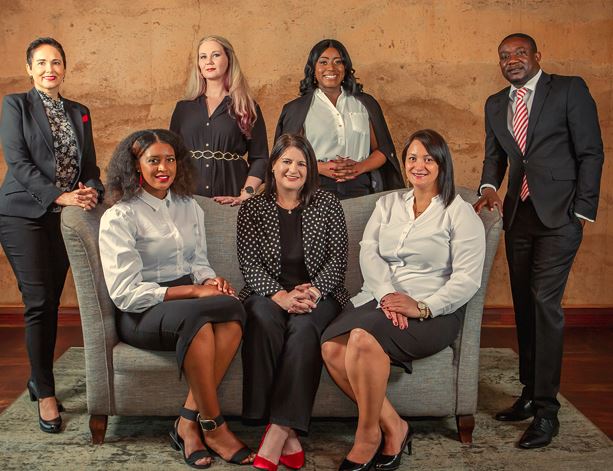
The art of building a successful high-performance team

By Marlize Horn
Group Executive: Brand & Corporate Affairs – Capricorn Group.
Effective teams are the foundation of successful organisations. These teams produce quality work, are highly productive, and are committed to the success of the organisation. If our teams are dysfunctional, so is our organisation.
It is in the organisation’s best interest that its leaders are committed to establishing and building high-performing teams who are inspired to work at optimal levels. So, what X-factor makes a team effective and ultimately successful?
High-performing teams are built on high levels of trust, communication, and clarity of purpose.
Every team member needs to understand their role and its importance to achieving the team’s goals and buy into the ethos of collaboration. Everyone in the team plays a role in the collective success. It is not about me; instead, we and everyone pitch in to help ensure that goals are met.
How do you build a high-performance team?
In building a high-performance team, most of the responsibility lies with the team leader. It starts with recruiting team players who have ambition for their personal growth and success but also that of the team and the organisation. The best leaders create a positive environment for their team that fosters communication, trust, respect, and accountability. Successful leaders embed a shared vision and collective purpose for the team with clearly set goals and targets. These leaders also recognise the strength of diversity and build a team with diverse backgrounds, skills, and experiences that complement each other. One of my team members once said, “Our team is amazing. It reminds me of a colourful tapestry. The value each team member brings to the table produces a perfectly intertwined result,” Joanie Kreft, Group Brand Manager.
Characteristics of high-performance teams
Having clear goals and measurable objectives with a shared purpose eliminates confusion and help a team appreciate the importance of their roles and those of their team members and how the team contributes to the organisation’s overall success. Leaders should clarify by setting priorities, implementing processes, and allowing time for planning and reflection. Regular check-ins with the team and progress meetings keep everyone focused, and potential problems can be identified and addressed decisively. Having clearly defined roles and responsibilities also helps teams to maximise their productivity and reduces conflict among the team members.
“Effective teamwork and dedication are all ingredients of a successful team. I am proud to be associated with this “result and performance-driven department,” Festus Nakatana, Capricorn
Group Corporate Affairs Manager.
Open and effective communication in a team leads to quicker problem-solving, while transparency and clear communication promote trust. Open and honest feedback and brave conversations in a team build trust and break down barriers, ultimately leading to more
authentic human connections. The breakdown of trust in a team is evident with frequent miscommunication, misalignment, increased interpersonal tensions, and reduced productivity.
When the trust relationship is broken, it takes serious and deliberate effort to rebuild. Therefore, cultivating a culture of trust and respect is essential.
“Marlize taught us to be professional and ignore work politics. This has helped our team become cohesive and focused on our deliverables. She values each member always acknowledges our work, and encourages us to go the extra mile,” Athel Innes, Personal Assistant.
Trust creates a strong bond between team members. Trust in a team will lead to a strong sense of confidence in the employee that the leader and peers act in their best interest. A person’s attitude drives their output or productivity. One bad apple can affect the team’s success, and a poor attitude can destroy it regardless of how great the team’s intentions are. Employees who trust their leader and peers are more engaged in their work and feel safe to share challenges or problems, whether personal or work-related.
High-performing teams relish collaboration and don’t focus on individual glory but rather the results of their work as a team effort and are not afraid to pitch in to help each other out to ensure that goals are met. A team that works well together is like a well-oiled machine, where there is individual ownership and collective responsibility. There are very few better feelings than collectively achieving success as a team. Success tends to inspire more success, measured by achieving goals.
My team has great camaraderie, emerging from collective passion and shared values. They have an admirable team spirit where everyone capitalises on their unique strengths and wears the captain’s armband in tasks. A team member said, “In our team, we don’t compete. Instead, we aim to support and complement one another. I was off fighting cancer for months, and all my teammates stepped in and carried my weight,” Noreen Arangies, Capricorn Group Communication Content Specialist.
Effective leaders understand the value of diversity in a team, not only in terms of age, race, and gender but also in abilities, skills, and background. Diverse thinking and perspectives build high-performing teams, and successful leaders see it as an opportunity, not a risk.
Leaders should therefore be intentional in building a diverse team, which allows for leveraging from everyone to build a robust and adaptable team. A high-performing team is not made up of well-rounded individuals but becomes well-rounded by integrating different strengths, perspectives, and experiences.
“Many people think that a team of people that think the same, act the same, or look the same will succeed, but the diversity in our team is one of the recipes for our success. Diversity allows different points of view, stronger concepts, honest scrutiny, and team success. Diversity truly ignites quantum leaps,” Grace Luvindao, Group Communication & Stakeholder Manager.
The continued success of a team is not guaranteed, and change is inevitable. This requires that teams continue to learn and develop to keep up with the demands of change. Leaders should therefore cultivate a culture of continuous learning and development.
A team performs at its best when the members are supported by their leader and when they can rely on the leader to be fair, and provide direction, support, and encouragement. These teams will retain their talent due to high job satisfaction and loyalty. It has often been said that people don’t leave a company; they leave their boss.
“We spend 40 hours a week at work and therefore a conducive work environment and a motivated team are vital and equally important to producing results,” Veripura Muukua, Capricorn Foundation Coordinator.
Building a highly engaged and motivated team is one of the most challenging but important tasks leaders have, and a lot more can be done to equip leaders with the skills to build successful teams. Our biggest priority as leaders should be to create a conducive environment where our teams can thrive. I want my team to be happy, passionate about their work and our company, eager to perform and contribute, and committed to supporting the team. I am
honoured to lead a team of highly motivated individuals who are excited about their work and
committed to seeing the team succeed, As One.
 Top left to right: Noreen Arangies, Capricorn Group Communication Content Specialist; Joanie Kreft, Group Brand Manager; Grace Luvindao, Group Communication & Stakeholder Manager; Festus Nakatana, Capricorn Group Corporate Affairs Manager;
Top left to right: Noreen Arangies, Capricorn Group Communication Content Specialist; Joanie Kreft, Group Brand Manager; Grace Luvindao, Group Communication & Stakeholder Manager; Festus Nakatana, Capricorn Group Corporate Affairs Manager;
Bottom left to right: Veripura Muukua, Capricorn Foundation Coordinator; Marlize Horn, Group Executive: Brand and Corporate Affairs; and Athel Innes, Personal Assistant.












































